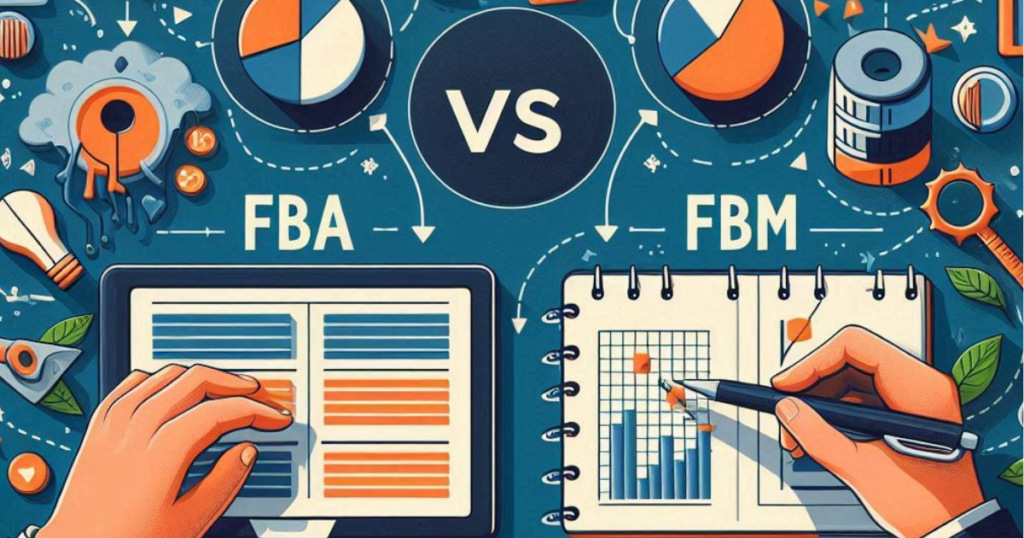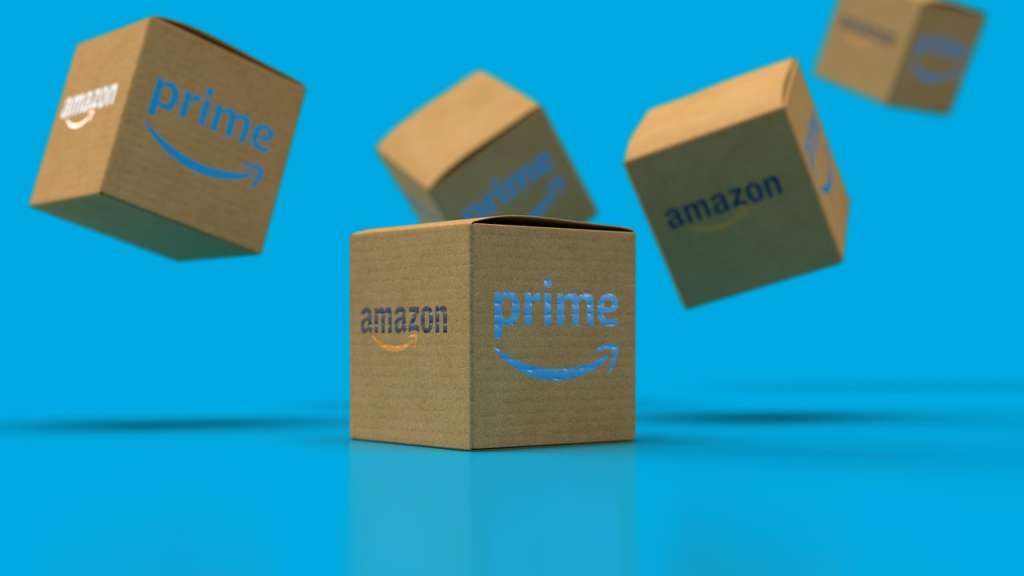
FBA vs. FBM: Which Fulfillment Method Is Right for You?
If you sell on Amazon, your fulfillment method can make or break your business. Besides third-party options, the platform offers two programs for sellers: Fulfillment by Amazon (FBA) and Fulfillment by Merchant (FBM).
This guide compares their strengths and weaknesses to help you select the one that best suits your needs. From convenience and control to costs and customer experience, we’ll break down their key factors so you can reach a decision that unlocks maximum growth for your Amazon business.
What is FBA?
FBA is a service designed to streamline the selling process for Amazon merchants. In this program, you send your products to Amazon’s fulfillment centers, where they store your inventory and pack and ship orders on your behalf. They also handle customer service and returns, providing a seamless shopping experience for your customers.
Leveraging FBA for your business involves four essential steps:
- Set up:
Begin by creating your Amazon selling account. Then, log in to Seller Central to initiate the FBA setup. Amazon provides tools to review FBA costs so you can estimate the cost of each product you plan to enroll in the program.
- Create product listings:
Add your products to the Amazon catalog, specifying they’re FBA inventory. This distinction is important for Amazon to recognize those items will be fulfilled through their fulfillment centers.
- Prepare products:
Prepare your products for transportation to an Amazon fulfillment center. You must adhere to Amazon’s packing guidelines for them to accept your shipment, and that includes ensuring items are securely packaged and meet shipping and routing requirements.
Ensuring your products comply with Amazon’s standards is vital to avoid potential issues and facilitate a smooth fulfillment process. You can simplify the process by shipping your goods to an FBA prep service for fulfillment.
- Ship products to Amazon:
Create a detailed shipping plan that includes printing Amazon shipment ID labels for your products. Then, send your shipments to fulfillment centers. Amazon offers resources and guidelines for sending inventory to ensure your products arrive safely and are processed efficiently.
FBA pros
FBA brings numerous benefits, including eligibility for Amazon Prime, streamlined logistics, and improved customer service.
Eligibility for Amazon Prime
- Products fulfilled by Amazon are eligible for Amazon Prime, which significantly boosts their visibility to Prime members.
- The Prime badge is a mark of trust and reliability, attracting over 200 million Prime members worldwide who enjoy fast, free shipping.
- Prime eligibility often leads to higher sales volumes and higher customer satisfaction, as Prime products tend to rank higher in Amazon’s search results.
Streamlined logistics and customer service
-
FBA handles the logistics of storage, packing, and shipping, which frees sellers to focus on other business aspects like sourcing products or marketing.
-
Amazon’s customer service and return handling can enhance the shopper experience and potentially encourage more positive reviews and repeat business.
-
FBA makes it easier for sellers to expand internationally by leveraging Amazon’s global fulfillment network without needing a physical presence in multiple countries.
FBA cons
While many sellers enjoy the convenience FBA offers, some are disappointed with the complex fee structure and lack of control.
Cost structure
- FBA charges sellers a monthly fee for inventory storage, which can vary based on the time of year and the size of the storage space used.
- Fulfillment fees are based on the size and weight of the product and are charged for each item Amazon picks, packs, and ships.
- Unsold products that occupy warehouse space for extended periods can accrue significant long-term storage fees, making FBA less cost-effective for items with slow turnover rates.
Less control over inventory
- Sellers must closely monitor their inventory levels to avoid stockouts or overstocking, which can be more challenging to manage remotely.
- Relying on FBA means adhering to Amazon’s fulfillment policies and timelines, which can sometimes lead to discrepancies or delays outside the seller’s control.
Complex fee structure
- The fee structure for FBA can be complex and difficult to navigate, making it challenging for sellers to predict their monthly expenses accurately.
- For sellers with low-margin items, FBA’s additional fees may not always be justifiable, especially for large, heavy items that incur higher fulfillment costs.
What is Fulfillment by Merchant?
Fulfillment by Merchant (FBM), on the other hand, gives you full control over storing, packing, and shipping your products directly to customers. This model can potentially lower costs and offers the flexibility to personalize the customer experience, such as with custom packaging.
FBM may be more advantageous for sellers with existing logistics frameworks or those selling bulky, heavy, or low-turnover items that would incur high fees through FBA. However, it requires you to take on the responsibility of customer service, shipping, and returns, which can be a significant undertaking.
FBM pros
FBM can be particularly beneficial for sellers with existing logistical infrastructure or those that sell products not well suited to FBA’s fee structure.
More control over inventory and shipping
- Handling customer service and returns personally can lead to stronger customer relationships and insights.
- Sellers have direct oversight of their inventory, which enables more precise stock control and the ability to adapt quickly to changes in demand.
Potentially lower costs
- Sellers could save on the monthly storage, fulfillment, and long-term storage fees associated with FBA.
- Sellers can choose the most cost-effective shipping options and carriers based on their products’ size, weight, and destination.
Customized customer experience
- Direct fulfillment allows for greater opportunities to build and promote your brand through customized packaging and inserts.
- Direct communication with buyers can improve their service experience and build loyalty.
FBM cons
FBM demands more from sellers in terms of time, resources, and logistics management. It also poses challenges regarding product visibility and customer service.
Increased responsibility
- Managing storage, packing, and shipping can be significantly time-consuming, especially as order volumes grow.
- Handling customer inquiries, complaints, and returns without Amazon’s infrastructure can be daunting and resource intensive.
Logistical challenges
- Without Amazon’s shipping rates, smaller sellers may face higher shipping costs, which can eat into profit margins.
- As your business grows, the demands of fulfilling orders in-house can become overwhelming without significant investment in logistics and staffing.
Reduced visibility on Amazon
- FBM products do not automatically qualify for Prime, which can reduce their visibility and appeal to Prime customers.
- Products fulfilled by Amazon tend to rank higher in search results, making it more challenging for FBM listings to compete.
Handling returns and customer service
- Managing returns and exchanges can be complex and costly, as they require dedicated resources to ensure customer satisfaction.
- Taking on customer service and returns means any issues can directly impact your seller feedback and product ratings.
Factors to consider before choosing an Amazon fulfillment method
The choice between FBA and FBM also depends on your products’ size, weight, and how quickly they sell. Despite the program’s fees, high-turnover items might benefit more from FBA because of Prime eligibility and faster shipping times. Meanwhile, bulky items or selling more slowly could be more cost-effective with FBM, as you avoid long-term storage fees.
Item size and weight
The best fulfillment method can hinge on the physical characteristics of your products.
The FBA fee structure includes charges based on item size and weight, making it more costly for larger, heavier products. It’s vital to weigh the benefits of FBA’s ease and reach against the higher costs of storing and shipping bulkier items.
On the other hand, FBM can offer savings on fulfillment costs for larger items, as you avoid FBA’s size- and weight-based fees. Direct negotiations with shipping carriers may also yield better rates that mitigate the cost of shipping large items.
Control of customer experience
How you fulfill orders, from packaging to post-purchase support, significantly affects the customer experience.
FBM allows you to brand your packaging and include custom inserts to enhance the buyer’s unboxing experience. Additionally, managing customer service in-house allows for personalized interactions, potentially increasing customer loyalty.
Meanwhile, FBA provides a uniform experience for consumers, with efficient shipping and professional handling of returns. Amazon’s customer service takes the lead, offering convenience but less opportunity for personalized interaction.
For a middle-ground solution, consider partnering with an FBA prep service like MyFBAPrep. They can provide similar custom packaging solutions that bridge the gap between FBA’s efficiency and FBM’s personal touch.
Seller feedback and logistics
Your choice of fulfillment method influences your seller feedback and operational efficiency. FBA’s professional fulfillment process can increase customer satisfaction and positive feedback. The program also lets you concentrate on scaling your business, knowing logistics are dealt with efficiently.
If you have an established logistics system, FBM can integrate into it seamlessly for a tailored fulfillment solution. Direct oversight of the logistical process provides greater control over the factors that impact customer feedback.
Fees and turnover rates
Understanding how fees and inventory turnover impact your fulfillment strategy is crucial for managing costs and maintaining operational fluidity. FBA’s comprehensive fees cover storage, fulfillment, and potentially long-term storage — all of which affect your bottom line. Effective inventory strategies are vital to avoid excessive fees and optimize your turnover rate with FBA.
On the other hand, FBM eliminates the direct costs associated with FBA but has a different set of financial considerations. It does provide more direct control over inventory though, which allows for agile adjustments to optimize storage and turnover.
Prime badge
The Amazon Prime badge is a powerful driver of visibility and sales. Products fulfilled by FBA automatically qualify for Prime shipping, which boosts their attractiveness to a vast audience of Prime members. The program badge is synonymous with quick delivery and reliable service and so often results in higher sales volumes.
FBM sellers can aim for Seller-Fulfilled Prime status, although it demands adherence to Amazon’s stringent delivery and service criteria. To qualify for Seller-Fulfilled Prime, you must be strongly committed to maintaining high performance in logistics and customer service.
Wrapping up — Deciding between FBA and FBM
The choice between FBA and FBM boils down to weighing the costs, how much control you desire, your potential scalability, and how you want to manage customer experiences.
As we’ve shown, each program has its advantages, so your business model, product types, and operational capabilities will be highly influential factors in your selection. Reflect on your business goals, resources, and customer expectations to guide your decision.
The eCommerce industry evolves constantly, so staying informed will help your business adapt and thrive. Conduct further research or consult a fulfillment expert to ensure your fulfillment strategy aligns with your business objectives.
About the Author

This is a guest post written by Tom Wicky, an entrepreneur, startup advisor, and management consultant with over 20 years of senior management experience.
He is the Co-Founder and CEO of MyFBAPrep, the largest worldwide 3PL ecommerce warehouse network. He managed the digital assets of local media companies across Europe as part of a $2 billion private equity investment led by Macquarie Bank. At the beginning of the Amazon FBA Marketplace, Tom built a data automation platform used to programmatically generate, manage and optimize over 1 million product listings on Amazon. He is a Boston sports fanatic and a recovering hot sauce junkie. Tom speaks Spanish and German and lives in Florida with his wife and three children.
If you liked reading this article, we suggest checking out these as well –






